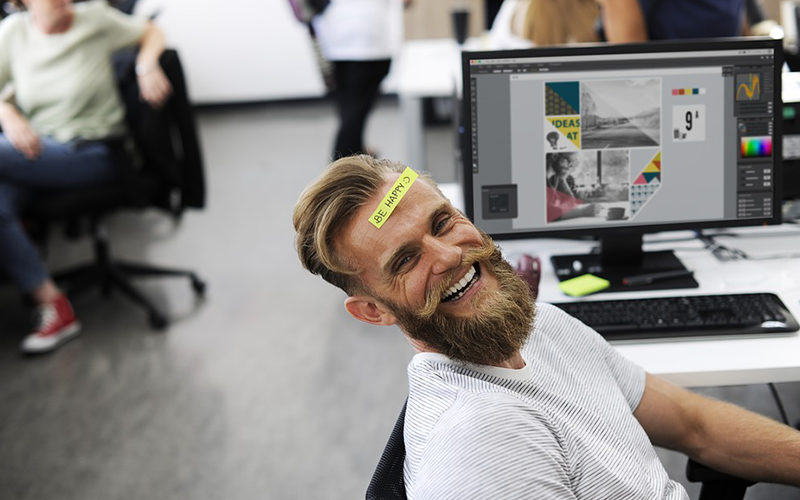
The workplace is constantly evolving. From new technologies like interactive displays and tablets, to alternative designs incorporating co-working and outside space; in 2018 there are many ways that offices can be designed and accessorised to reflect changing attitudes towards work.
Business owners want to create a space that is enjoyed by employees; with stimulating creativity being a priority. Creative workplace interiors and technology are becoming increasingly vital.
As technology is used more and more in the workplace and tools like artificial intelligence are introduced, office roles are becoming increasingly creative. Businesses that are ahead of the game know that, the more technology that they introduce, the more they must adapt office interiors to encourage imaginative techniques.
1. Sustainable Spaces
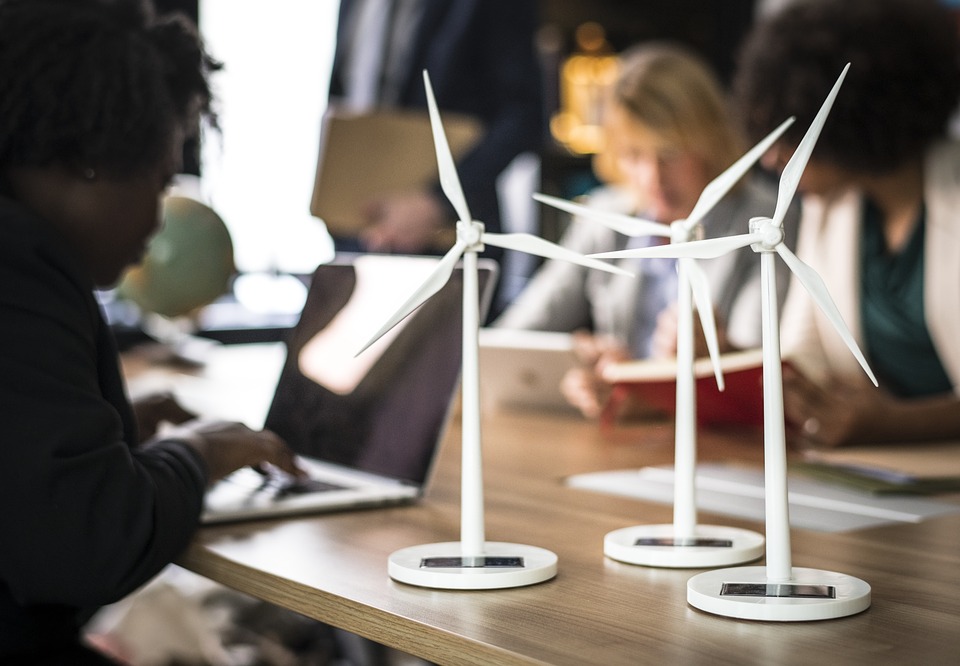
Everyone knows the importance of being sustainable – as much as we don’t like to think about it, global warming and deforestation are causing great global distress which could have extreme negative impacts in our lifetime. The good news is there is lots that we can do to it. From reducing our meat consumption to avoiding reusable plastics, there is a great awareness nowadays about what we can do to save the planet.
So how does this extend to the office? There are many simple ways that we can be eco-friendly in the office, like buying supplies in bulk and unplugging devices that aren’t being used. However, some offices take a step further by implementing an entirely eco-friendly design.
Some great examples of sustainable offices include:
These businesses are paving the way with environmentally friendly, self-sustaining workplaces, and any business owner who is interested in staying ahead of the trends should think about doing the same.
2. Alternatives to Computers
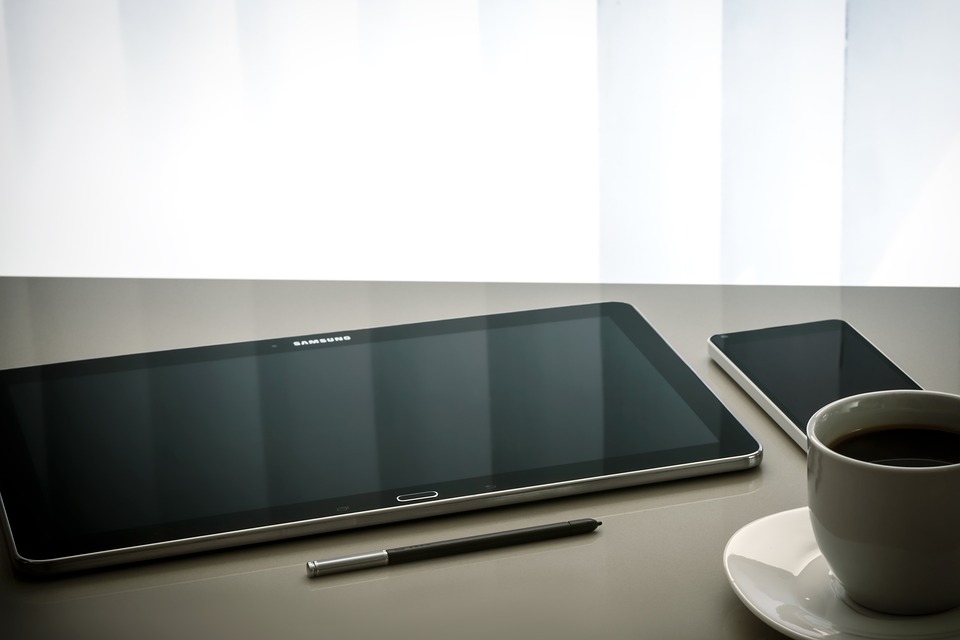
The days of only using a desktop computer are long gone and future workplace trends are certainly taking hold. Offices are now preferring to use laptops to desktops which may be theirs or belong to the company. People are also increasingly using smartphones in the office.
But it could evolve even further into a 40-inch tablet being the main part of office equipment. This is because touch is much more rewarding and natural than using a mouse and Microsoft is building a large tablet that can be interacted with seamlessly. Using touch is a great way to stimulate creativity in the office using technology.
3. Collaborative Spaces
https://www.youtube.com/watch?v=nEH2aItTbxQ
The way that we work with our colleagues is changing. Knoll states how we are “shifting from a me to a we work environment” as employees are starting to recognise the benefits of using each other’s skillsets to work on problems.
So how does this affect the interior of the workplace? Rather than having individual cubicles, new offices are starting to favour open-plan offices where workers can see their colleagues. Some businesses are even using communal tables that encourage direct conversation.
Collaboration is used to increase productivity in technology as well. Whether it be through the BYOD (bring your own device) model where people are free to talk to colleagues who might be working from other offices or remotely on Facetime, Skype and Google Hangouts, or using interactive whiteboards to see their colleagues in life-size as they collaborate, it is increasingly important to collaborate using the latest technologies.
4. Colour

Moo, the business card start-up turned international company, possibly leads the way in terms of creative office environments. Its new office in Farringdon, London has many notable features, including a two-storey library, meeting rooms named after fonts, and a commemoration plaque reminiscing the time some tea was spilled on a stair (yes, you read that right).
But the strong use of colour remains constant throughout. More than 500 pieces of paper in 26 tones stretches for 60 metres throughout the office, which gives a fresh, creative air to the workplace. There are also meeting rooms with bright carpets and of different colours – and one which is filled with plants!
The effects of colour in the workplace are linked directly to mood and productivity.
Beneficial colours to your company include:
Although a popular decoration colour, white is known to be the worst to decorate your office in! It produces a sterile environment and can emit a cold, isolated feeling.
5. Artwork

Forbes states that “the impact of art in the workplace is often underestimated” and that it can immediately change the mood of a meeting room or be a talking point and ice-breaker amongst people. The Psychology department at the University of Exeter have done research to prove that employees who have control over their office’s look are up to 32% more productive.
6. Interactive Displays
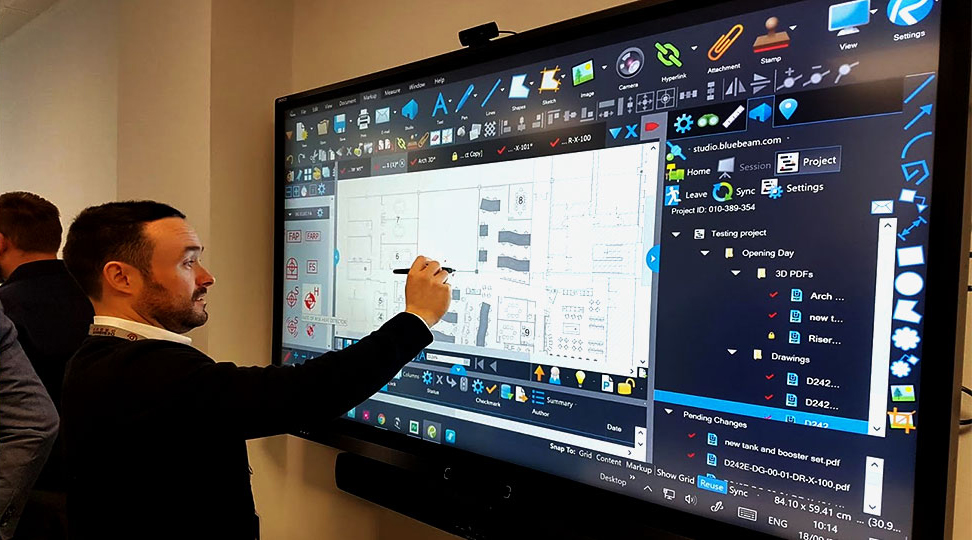
Interactive displays are one of the best ways that we can stimulate creativity and productivity in the workplace. As they are an interactive whiteboard alternative, displays can be drawn upon just like a whiteboard and pictures and texts can be dragged onto the screen as well. Think of them as a creative canvas on which employees can draw out their ideas!
Writing by hand and even doodling naturally fosters creativity and helps employees reach solutions that they might not find by just staring at a word document or blank piece of paper. It also encourages business collaboration as the screen can be seen and interacted with by multiple people (even employees working remotely or in other offices!), so it’s a great way to bounce ideas off each other.
We have a range of state-of-the-art interactive displays. Click here to see the full range.
7. Promote Clean and Tidy Spaces
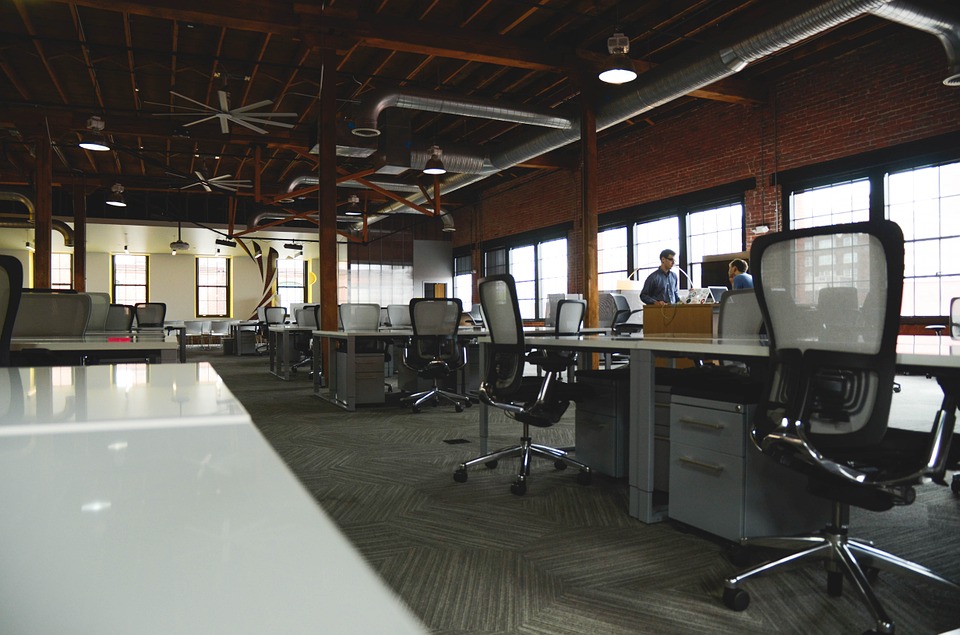
Organised workspaces naturally induce creativity. One of the simplest ways we could make the workplace more creative and productive is to add organisation features. These could include drawers, different folders with compartments and pen holders.
Technology can help to keep workplaces organised and subsequently creative, as well. Evernote is a great substitute for notebooks and putting documents in Cloud is a great solution to keep documents decluttered.
8. Creative research methods
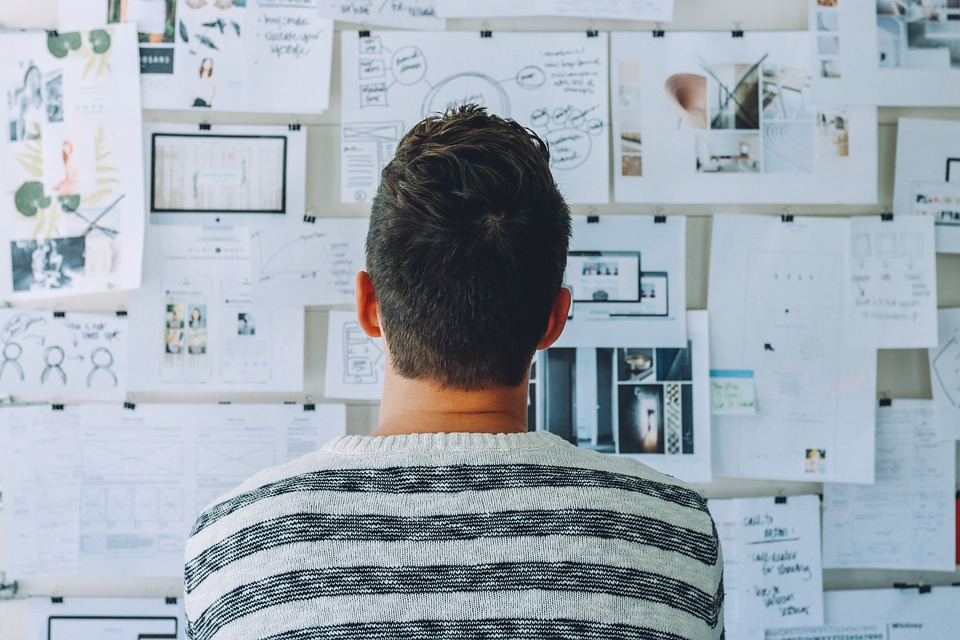
Social media is a powerful new tool which can be used to research creatively. Whether employees use Pinterest as a search engine or engage in Twitter chats to collaborate with other people in their industry, it’s easy to get some fresh opinions and ideas.
It’s easy to creatively display your ideas to others as well. Using gifs, infographics or a research wall, many methods can be used in your office to display your findings to others.
9. Alternatives to desks
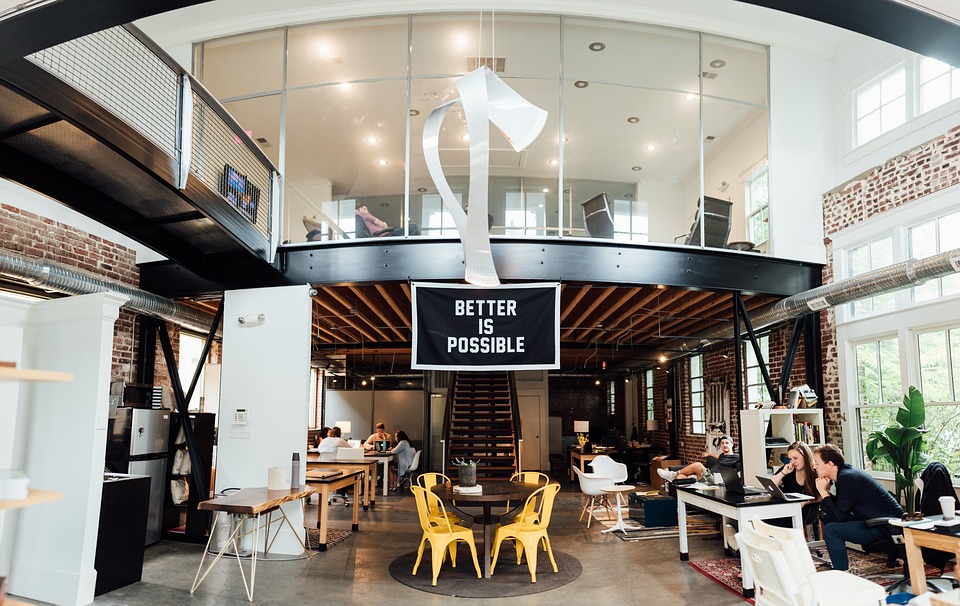
The popular flight booking website Skyscanner, who has recently moved their headquarters to Budapest, have a forward-thinking office layout including all sorts of contemporary decorations. One of their main ideas is that they are “not a stay at your desk sort of place” due to having working with employees all over the world in different time zones.
Because of this, they have grassy areas, bean bags and sofas and even chill out rooms, asserting that the use of these increases productivity. Having bean bags means that the seating can be constantly adjusted and adapted, giving the employee freedom to move around as they please.
Having sofas in offices also encourages mobility within the workplace; meaning that quick meetings can be taken away from the desks. There are a great deal of benefits to moving around in the work day, from avoiding repetitive strain injury to even decreasing your risk of cancer! And of course, moving around during the day stimulates creativity and in turn, productivity.
Conclusion
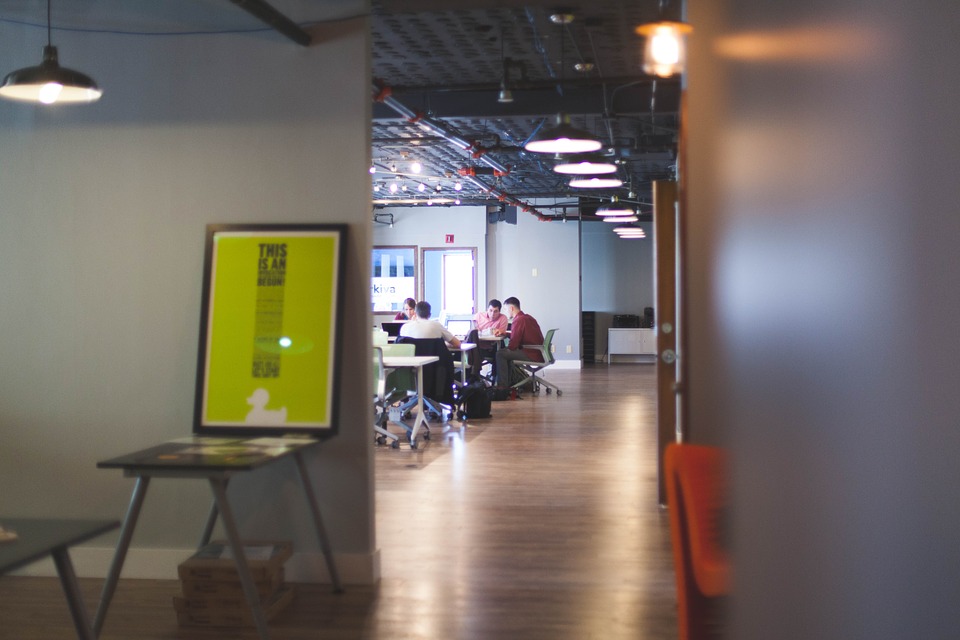
From using alternatives to computers and bean bags instead of office chairs, to keeping decluttered using apps, to injecting some colour, there are lots of ways to stimulate creativity in the workplace.
While some of them require big changes, and are ideal for new offices being built, some are simple and can be adapted almost instantly. Despite this, they are all important features that businesses across the globe should be starting to think about using.
Keep up to date with all the latest from Avocor and partners and get information on upcoming events and exciting product news.

Speak to one of our product specialists and find the perfect solution for you.